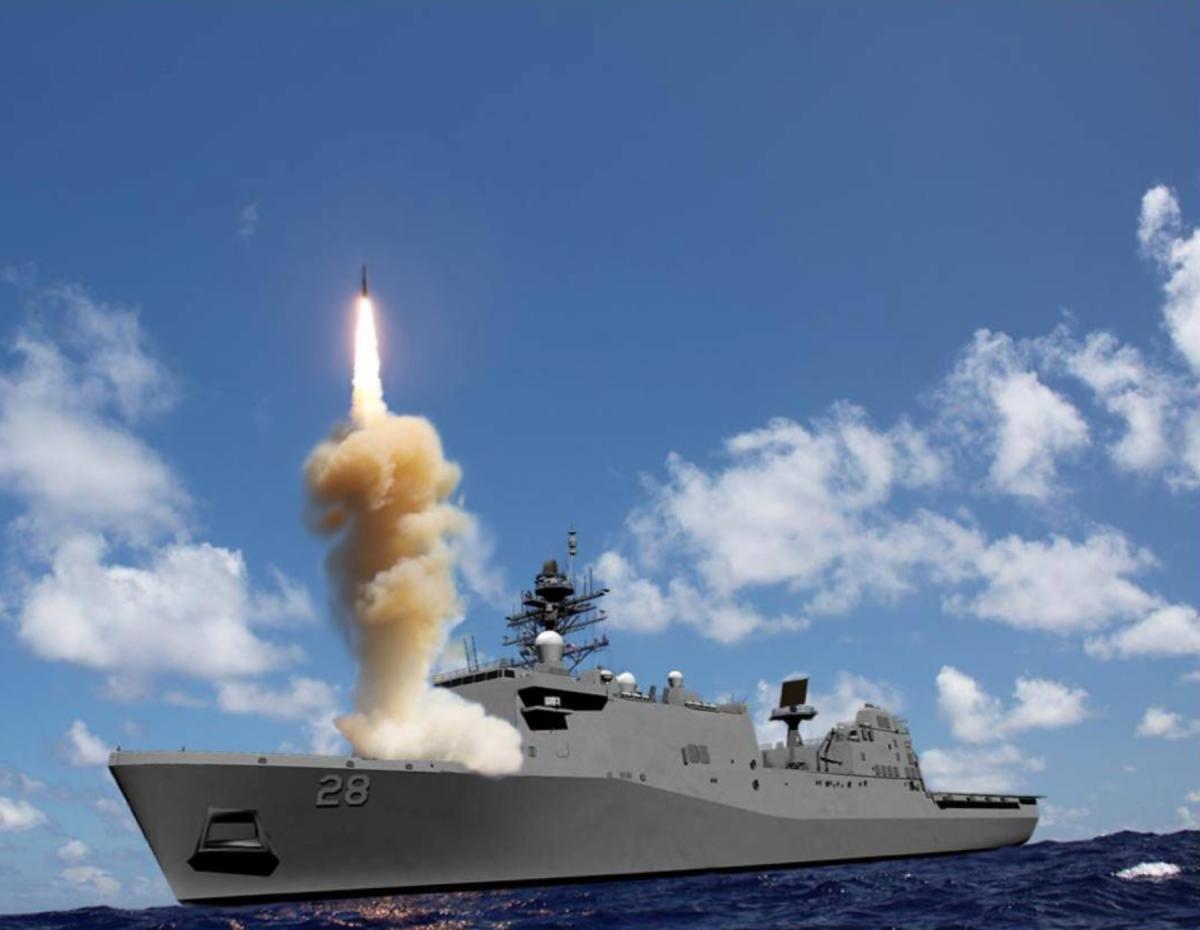The U.S. Department of Defense’s primary mission is to provide combat-credible military forces to deter war and protect the nation. The new National Defense Strategy (NDS) includes three lines of effort, the first of which is to rebuild military readiness while improving joint force lethality. The U.S. Marine Corps is critical to the joint force and was quick to align its strategy with the NDS while continuing to maintain a forward presence for crisis response, deter aggression in support of allies and partners, expand the battlespace by placing adversary interests at risk around the globe, and if needed project sustainable combat power ashore across the full range of military operations. Secretary of the Navy Richard Spencer has made it clear that U.S. naval forces—including the Marine Corps—must deliver lethality with the speed of relevance.
The San Antonio–class LPD flight I warships were designed with the space, weight, power, cooling (SWaP-C), and warfare system architecture to permit the quick integration of new technologies and frequent modular upgrades to become more lethal quickly. Capability, capacity, and lethality equal combat readiness, and one innovative approach to accelerate combat readiness is to incorporate a “payload package” in the San Antonio–class LPD flight I and II warships. Payload packages are not new for the Navy. With the retirement of the four Ohio-class SSGNs approaching, the Navy plans to integrate into some Virginia-class submarines a Virginia Payload Module (VPM). This will enable these submarines to meet the demands of the guided-missile submarine fleet without building an entire new submarine class and field a menu of maturing technology to satisfy requirements of the Tactical Submarine Evolution Plan.
Similarly, the Navy and Marine Corps have developed an Amphibious Warship Capabilities Evolution Plan to enhance distributed maritime operations and field an assortment of capability to enhance the connectivity and lethality of amphibious warships against high-end threats. In particular, there are planned upgrades for: electromagnetic warfare, antiair warfare, offensive surface warfare, counter–fast inshore attack craft, torpedo defense, counter battery, and cyber warfare. In addition, the ships will receive the latest electronic warfare enhancements with the Surface Electronic Warfare Improvement Program (SEWIP) blocks II and III and will be outfitted with the Enterprise Air Surveillance Radar—the Navy’s next-generation radar that can provide simultaneous antiair and antisurface protection.
In the near term, the San Antonio payload package could include underwater and surface unmanned vehicles in the ships’ well decks, a directed-energy weapon system that builds on the laser demonstrator currently being installed on board the USS Portland (LPD-27), and a guided-missile vertical launching system with a 12-missile configuration to carry the RIM-162 Evolved SeaSparrow. In addition, the LPD flight I was specifically designed with space and weight to house a 16-cell Mk 41 vertical launch system—a capability that could be incorporated on LPD flight II warships as that program ramps up.
Operating under a common architecture, all naval ships must be able to communicate and integrate with each other. With advancements in the naval tactical grid, the strike and amphibious forces will be able to share tactical information using a common data link. In 2016 an F-35B, the Marine Corps variant of the Joint Strike Fighter, transmitted data to an Aegis system that then launched a SM-6 missile at a target. This was a clear demonstration of future Navy and Marine Corps integrated battlefield operations. Recently, at the annual Navy League Sea-Air-Space exposition, Rear Admiral Jim Kilby, the Navy’s Director of Warfare Integration, said that amphibious warships, “in conjunction with things like the Joint Strike Fighter, are really changing the way we view those assets and how they would help us in this great power competition.”
Without a doubt, fielding a San Antonio payload package on board LPD flight I and II ships would yield a substantial increase in the lethality and capability of amphibious expeditionary power projection forces, and answer the Secretary’s call to provide urgently needed capability with the speed of relevance.



